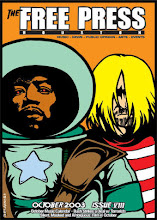Miracle at St. Anna

Spike Lee has made films longer than Miracle at St. Anna (Malcolm X, When the Levees Broke), but none is the tour de force that this adaptation of James McBride's novel becomes before your eyes. Leisurely paced, beautifully realized and wonderfully lensed Miracle at St. Anna deserves to be on your must see list.
The story starts in the early 80s when a postal clerk shoots a customer buying stamps. There's a couple of brief appearances by John Tuturro as a cop and John Leguizamo as an Nazi art dealer, as well as a more sustained turn by Joseph Gordon-Levitt as a reporter who propels the story into its WWII flashback.
Once we begin the true story we are walking in the footsteps of the Buffalo soldiers of the 92nd division of the army stationed in Tuscany in 1944. After their squad is wiped out four troops (Derek Luke, Michael Ealy, Laz Alonso, Omar Benson Miller) find themselves behind enemy lines and holed up in a small village. Subplots involve a group of Italian partisans, referred to by the Germans as terrorists (shades of Homeland Security in one scene) and a German soldier who deserts after he witnesses a massacres of over 100 Italian civilians. This particular incident is based on an actual moment in history known as the Sant'Anna di Stazzema massacre where over 500 old men, priests, women and children were taken out Nazi villain style.
The action plays out in Italian, German, and English which only lends credence to the reality that Lee portrays. There is a miracle that will shake your soul. Several foreign actors share center stage including actress Valentina Cervi who was recently seen in one of the Pupi Avati films that played at the local museum last week. There are additional flashbacks within the flashbacks (a tense standoff at a racist Louisiana diner) that add dimension to the film's structure.
It's a tough movie landscape out there, with Shia and chihuahuas competing for your attention. Tack on the economy going into a tailspin. It's a wonder that a brilliant film like this can get the attention it deserves. When events finally wrap it's on a pristine Caribbean beach and there's actually a moral. Miracle at St. Anna will astound audiences whether its now or later.













